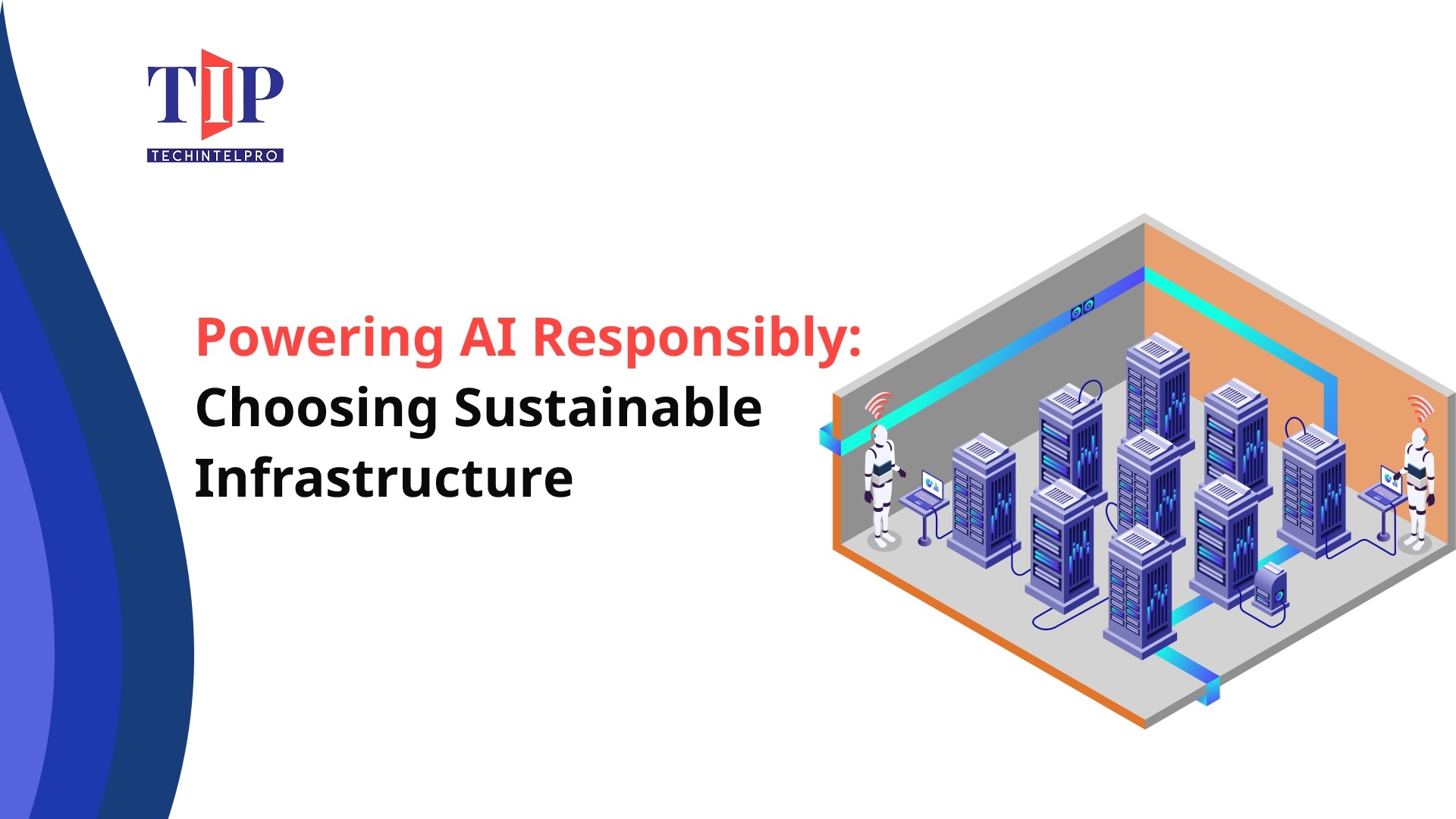AI is revolutionizing industries, from generating art and writing code to optimizing global logistics and operations.
Powering this innovation comes at a steep environmental cost. Massive energy consumption and rising carbon emissions from ever-growing AI workloads represent the dark side of progress. This rapid growth contributes to a growing carbon footprint.
Building sustainable, low-carbon infrastructure is no longer optional. We must act now to grow AI responsibly while reducing its environmental impact. We also need to ensure that the technology we build today remains sustainable for the future.
Understanding Today’s AI Growth
The rise of large language models, generative AI, and enterprise automation is pushing computing requirements to new heights. Graphics Processing Units (GPUs) and Tensor Processing Units (TPUs) form the backbone of these workloads. Cloud and private data centers are expanding rapidly to keep pace with demand.
-
Global data center electricity consumption reached 415 terawatt-hours (TWh) in 2024, about 1.5% of global electricity use.
-
Consumption has grown 12% per year over the past five years.
-
AI could account for 35 to 50 percent of data center power use by 2030. Total consumption may double to 945 terawatt-hours.
-
Training a single large generative AI model, such as GPT-4, consumes vast amounts of electricity and generates significant CO₂ emissions.
Vikram Bahl from Google Cloud emphasizes that scalable, efficient infrastructure is essential to support AI growth while keeping emissions in check.
Watch Vikram Bahl discuss AI growth at Tech Week Singapore 2025
The demand for AI shows no signs of slowing. Every new model requires more compute and energy. Without sustainable strategies, AI growth will intensify environmental impact. Infrastructure must scale responsibly while powering innovation safely.
Environmental Challenges of AI Infrastructure
While high-performance AI hardware powers incredible innovation, it also comes with real trade-offs between performance and sustainability.
The key challenges organizations and developers face are:
-
High Energy Consumption:
Training and inference require large amounts of electricity. A single AI query can consume five times more energy than a normal web search.
-
E-waste and Hardware Obsolescence:
Frequent upgrades generate e-waste and emissions from manufacturing rare earth materials.
-
Cooling Requirements:
Data centers produce enormous heat. Air or water-based cooling adds to energy use and carbon footprint.
Trent Prestegar of Supermicro highlights modular, energy-efficient designs as a way to reduce environmental impact and carbon footprint.
Watch Trent Prestegar share energy-saving insights at Tech Week Singapore 2025
Sustainable Infrastructure Choices
Building sustainable AI infrastructure requires action across data centers, hardware, and operations. Organizations must balance high-performance AI with energy efficiency, reduced emissions. The following approaches highlight how AI infrastructure can grow responsibly:
Green Data Centers
Transitioning to renewable energy is a key step in reducing AI’s environmental impact. Data centers powered by solar, wind, or hydroelectric energy can decarbonize the environment significantly while supporting scalable AI workloads.
-
Google aims to run on 24/7 carbon-free energy by 2030.
-
Renewable energy supports growing computing demand with minimal environmental impact.
-
Advanced energy management systems optimize usage, reducing waste and operational costs.
Energy-Efficient Hardware
Hardware innovation is critical for sustainable AI. Energy-optimized chips and localized processing reduce power consumption without sacrificing performance.
-
AI chips designed for efficiency lower energy use during training and inference.
-
NVIDIA’s Blackwell platform reduces energy consumption by up to 25 times compared to previous generations.
-
Edge computing reduces data transfer energy, supporting carbon-neutral operations.
AI-Driven Optimization and Circularity
AI itself can improve the efficiency of AI infrastructure. Predictive models, intelligent cooling, and circular hardware strategies extend equipment life and cut emissions.
-
Machine learning forecasts energy demand and adjusts cooling and power dynamically.
-
Recycling and predictive maintenance extend hardware lifecycles and reduce e-waste.
-
Advanced liquid cooling systems recirculate water to minimize resource use.
By integrating these strategies, organizations can scale AI effectively while keeping environmental impact in check. Sustainable infrastructure protects the environment and strengthens the future of AI technologies.
AI as a Tool for Sustainability
AI can drive environmental goals by optimizing energy use, managing resources intelligently, and reducing emissions. Organizations can harness AI to create smarter, greener operations through the following approaches:
-
Optimizing Energy Grids
AI forecasts energy supply and demand, enabling better integration of renewable sources and reducing carbon intensity.
-
Predictive models help balance renewable and conventional energy supply efficiently.
-
AI-driven grid management minimizes energy wastage and reduces CO₂ emissions.
-
Smart Infrastructure
AI-powered systems optimize buildings, traffic, and urban planning to lower energy consumption and emissions.
-
Intelligent traffic management reduces congestion, lowering fuel consumption.
-
AI-controlled building systems cut energy use by 10–30% through adaptive heating, cooling, and lighting.
-
Predictive Maintenance
AI anticipates equipment failures, ensuring efficient operations and prolonging asset life.
-
Predictive analytics prevent energy losses from faulty machinery.
-
Maintenance scheduling reduces downtime and extends hardware lifespan, lowering e-waste.
By applying these strategies, AI not only enhances operational efficiency but also supports broader sustainability goals. Smart, AI-driven systems help organizations reduce emissions, conserve resources, and build a more environmentally responsible future.
Conclusion
AI growth is one of humanity’s most transformative advances, unlocking unprecedented opportunities across industries. Yet, this progress comes with significant environmental challenges.
By adopting sustainable infrastructure, leveraging renewable energy, energy-efficient hardware, liquid cooling, and circular strategies, organizations can power AI responsibly while protecting the planet. Prioritizing these measures ensures that performance, innovation, and environmental stewardship advance hand in hand, securing a future where AI’s benefits are both powerful and sustainable.

